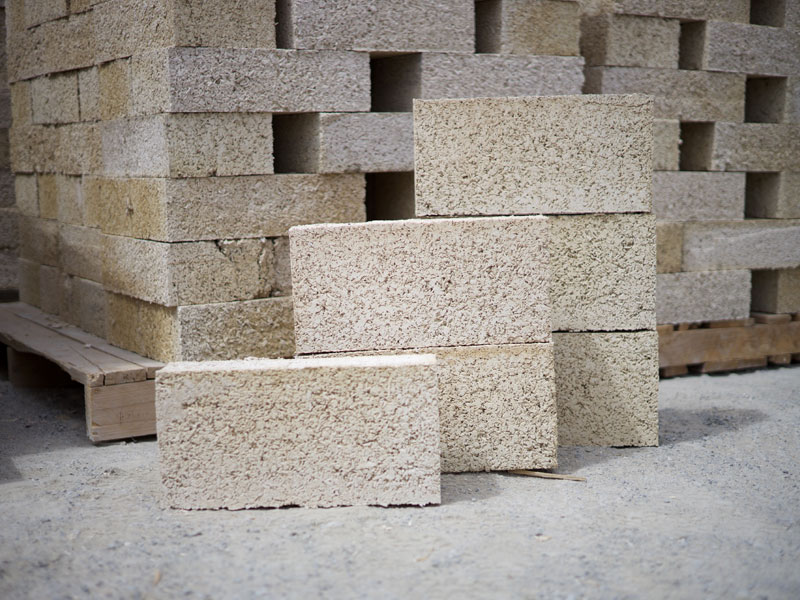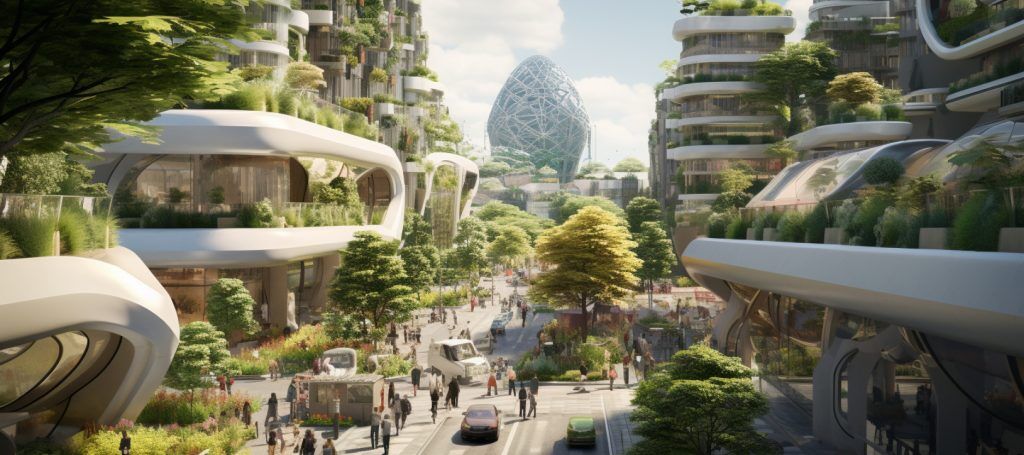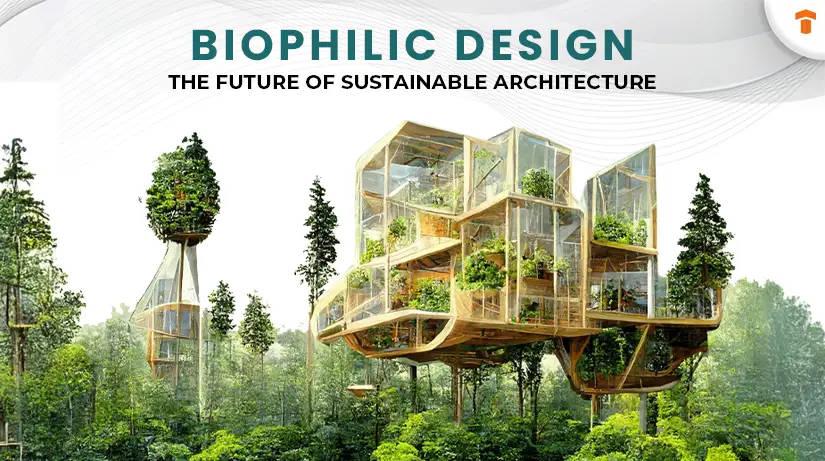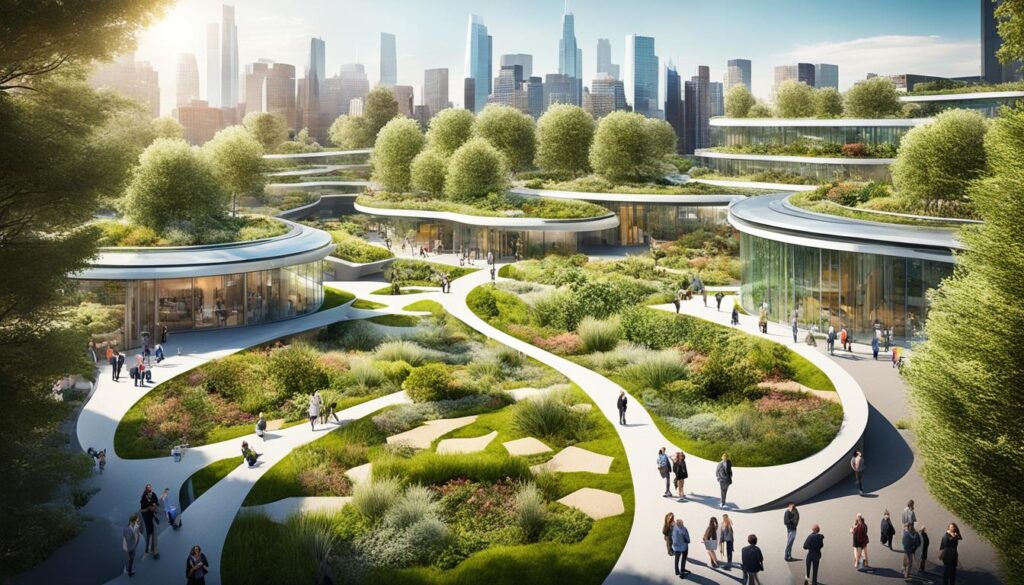Eco-Friendly Bio-Based Building Materials for Sustainable Construction
As the construction industry contends with its environmental impact, bio-based building materials have emerged as a promising solution. These materials provide significant environmental benefits and present economic advantages that have the potential to reshape the approach to building projects.
The range of bio-based options is expanding, including sustainable materials such as wood and bamboo, as well as innovative alternatives like mycelium and recycled components. However, challenges related to availability and standardization persist. This article examines the benefits, types, and future potential of bio-based materials, laying the groundwork for a more sustainable construction landscape.
Why Use Bio-Based Building Materials?
Bio-based building materials exemplify a transformative strategy in sustainable construction, leveraging renewable resources such as natural fibers and wood alternatives to decrease the carbon footprint of the construction industry.
These materials not only facilitate the development of eco-friendly products but also advance resource efficiency and environmental stewardship by minimizing environmental impact and adhering to sustainable design principles.
The incorporation of such materials into green buildings improves insulation efficiency, fosters waste reduction, and bolsters the circular economy, ultimately aiding in climate change mitigation and promoting healthier indoor environments.
Environmental Benefits
The environmental benefits of bio-based building materials are substantial, including reduced carbon footprints, improved indoor air quality, and enhanced habitat preservation.
By employing materials derived from renewable resources, such as bamboo and straw bale, the construction industry can diminish its environmental impact while promoting ecological balance.
These materials not only optimize resource utilization but also play a vital role in pollution reduction. Research indicates that utilizing straw bale constructions can decrease CO2 emissions by as much as 20% in comparison to traditional materials. Furthermore, bio-based materials contribute to improved soil health; when these materials decompose, they enrich the soil, thereby fostering biodiversity.
Given the increasing importance of water conservation, the adoption of such materials can result in significant reductions in water usage throughout their production and lifecycle.
This transition is not only advantageous for the environment but also aligns with global sustainability goals, encouraging the broader adoption of eco-friendly construction practices.
Economic Benefits
The use of bio-based building materials can yield significant economic advantages, including cost-effectiveness and improved resource efficiency, ultimately supporting sustainable development within the construction industry. These materials typically qualify for green certifications, which enhances the attractiveness of projects and may contribute to increased market values.
Incorporating such eco-friendly products can substantially reduce lifecycle costs by lowering energy consumption during both the construction phase and the operational phase. Additionally, projects that adopt sustainable practices are likely to attract environmentally conscious investors who prioritize socially responsible initiatives.
For example, the Bullitt Center in Seattle, renowned for its innovative application of sustainable materials, has not only reduced its operational costs but has also established a benchmark in the market, demonstrating that green infrastructure can enhance competitiveness.
As more stakeholders acknowledge that eco-friendly approaches can generate financial returns, the transition toward sustainable building practices is expected to gain significant momentum within the industry.
Types of Bio-Based Building Materials
There exists a diverse array of bio-based building materials, each presenting distinct advantages for sustainable construction. These range from traditional wood alternatives to innovative solutions such as hempcrete and mycelium.
Materials like insulation derived from natural fibers and eco-friendly products made from recycled content are essential in enhancing building performance while simultaneously reducing environmental impact.
1. Wood
Wood stands as one of the most commonly utilized bio-based materials in the construction industry, esteemed for its natural aesthetic, structural integrity, and sustainability when sourced ethically. The application of responsibly sourced wood contributes to low-impact materials that enhance both the aesthetic and functional elements of green building.
From solid wood, recognized for its durability and warmth, to engineered wood products that encourage innovative design while optimizing resource efficiency, the versatility of this material is indisputable. Its applications extend from framing and flooring to custom cabinetry and furniture, demonstrating its alignment with contemporary architectural trends.
Sustainable sourcing practices, which emphasize responsible forest management and reforestation efforts, play a significant role in mitigating environmental impact. By ensuring that wood products originate from renewable sources, builders and designers can contribute meaningfully to the preservation of ecosystems, reduction of carbon footprints, and promotion of biodiversity.
This approach ultimately paves the way for a more sustainable future in construction.
2. Straw
Straw is an exceptional bio-based building material recognized for its superior insulation properties and renewable nature, making it an ideal choice for sustainable construction practices. By employing straw bale construction, builders can achieve remarkable energy efficiency while simultaneously supporting local agricultural industries.
This innovative approach not only diminishes reliance on traditional resources but also promotes a circular economy by facilitating the upcycling of agricultural byproducts. For example, straw can be utilized in techniques such as straw-clay infill, which combines straw with clay to enhance thermal mass and stability.
The incorporation of straw in construction can significantly reduce a building’s carbon footprint, as it necessitates considerably less energy to produce when compared to conventional materials such as brick or concrete.
As the industry transitions towards more environmentally responsible practices, the integration of straw into building designs presents a forward-thinking solution that highlights both economic and environmental advantages.
3. Bamboo
Bamboo is a highly renewable bio-based material recognized for its rapid growth and strength, positioning it as an eco-friendly option for construction. Its versatility facilitates a wide range of applications, from structural components to decorative finishes, within sustainable architecture.
This remarkable grass can grow up to three feet in a single day under optimal conditions, making it one of the fastest-growing plants on the planet. Its hollow structure contributes not only to its lightweight and strong characteristics but also to its flexibility, which is particularly advantageous in regions prone to earthquakes.
By incorporating bamboo into their projects, builders can significantly reduce their ecological footprints, as its cultivation requires minimal water and no pesticides. Additionally, the carbon absorption properties of bamboo aid in mitigating climate change, aligning seamlessly with sustainable design principles that emphasize ecological balance and resource efficiency.
4. Cork
Cork is a distinctive bio-based material recognized for its exceptional insulation efficiency and sustainability, derived from the bark of cork oak trees without causing harm to the trees themselves. This renewable resource not only offers outstanding thermal and acoustic insulation but also plays a significant role in fostering environmental awareness and habitat preservation.
Due to its remarkable capacity to regulate temperature and humidity, cork is an ideal material for both residential and commercial properties, enhancing comfort while simultaneously reducing energy consumption.
Architectural projects worldwide have increasingly adopted cork, ranging from boutique hotels featuring cork cladding to eco-friendly residences that utilize cork flooring for its natural resilience and aesthetic appeal.
Additionally, cork’s inherent properties contribute to improved indoor air quality by minimizing dust and allergens, thereby creating healthier living environments.
A notable example of cork’s application is the Barcelona Pavilion, which incorporated cork in its design to promote sustainability, demonstrating how innovative uses of this material can result in both functional and environmentally responsible structures.
5. Mycelium
Mycelium, the root structure of fungi, is emerging as a revolutionary bio-based material in the construction industry, recognized for its biodegradable properties and potential for eco-innovation. This sustainable material can be cultivated into specific shapes, rendering it suitable for a variety of applications, including insulation materials and packaging.
As architects and designers increasingly pursue environmentally friendly alternatives, mycelium presents a promising solution that has the potential to transform contemporary building practices. Projects such as the MycoTree, a prototype structure constructed entirely from mycelium and agricultural waste, demonstrate its durability and versatility.
Researchers are investigating the use of mycelium in creating lightweight yet robust components, which not only help to reduce carbon footprints but also lessen dependence on traditional, resource-intensive building materials.
The incorporation of mycelium into construction underscores a circular economy approach by utilizing waste while also tapping into the efficiencies found in nature, thereby inspiring a new wave of sustainable design thinking.
6. Recycled Materials
The utilization of recycled materials in construction signifies a noteworthy advancement in waste reduction and resource management, thereby contributing positively to the circular economy. By integrating materials such as reclaimed wood and recycled metals, builders can produce eco-friendly products that minimize environmental impact.
In recent years, the implementation of recycled concrete as a structural component has gained considerable momentum, facilitating the repurposing of demolished buildings into new foundations and pavements. Additionally, products like glass and plastic bottles are being transformed into insulation or decorative elements, which not only conserves resources but also diverts waste from landfills.
Innovative projects, such as the Bullitt Center in Seattle, exemplify the potential of these materials to create energy-efficient buildings. Through the adoption of these sustainable practices, construction firms can significantly reduce their carbon footprint while fostering an eco-conscious mindset within the industry.
Challenges and Limitations of Bio-Based Building Materials
Despite the numerous advantages associated with bio-based building materials, several challenges and limitations must be addressed to fully realize their potential within the construction industry.
Factors such as availability, accessibility, and a lack of standardization and regulatory frameworks impede their widespread adoption.
1. Availability and Accessibility
The availability and accessibility of bio-based building materials can vary considerably depending on geographic location, which in turn affects their application in sustainable construction projects. Limited local sourcing options often result in increased costs and logistical challenges, thereby undermining the potential advantages of utilizing these materials.
In numerous regions, the scarcity of specific bio-based resources can restrict construction professionals’ capacity to adopt more sustainable practices. For example, rural areas may encounter difficulties in locating suppliers of locally produced materials, leading to a dependency on imported alternatives that are not only more costly but also less environmentally friendly due to transportation-related emissions.
Enhancing collaboration between local producers and construction firms could represent a viable approach to improving the availability of these materials. By investing in regional supply chains and promoting educational initiatives regarding bio-based options, communities can advance towards greater sustainability and accessibility.
2. Cost
The cost of bio-based building materials can present significant economic challenges for numerous construction projects, necessitating meticulous budgeting and lifecycle costing to ensure financial viability. The higher initial costs associated with these materials, in comparison to traditional options, may discourage some builders from adopting these sustainable alternatives.
Upon closer examination, the long-term advantages of utilizing bio-based materials often reveal considerable savings in energy costs and maintenance. For instance, materials such as hempcrete and bamboo provide superior insulation and durability, which can lead to lower heating and cooling expenses over time.
According to the National Renewable Energy Laboratory, homes constructed with bio-based materials can achieve energy cost reductions of up to 30% when compared to conventional building options. Additionally, various incentive programs and grants are available to builders who opt for eco-friendly materials, which can help mitigate initial financial burdens and encourage broader adoption.
3. Lack of Standardization and Regulations
The absence of standardization and regulations related to bio-based building materials constitutes a substantial obstacle to their widespread adoption in the construction industry. This lack of clarity generates confusion regarding compliance with building codes and performance expectations, which can lead to hesitance among builders to utilize these materials.
In the absence of clearly defined standards, stakeholders may harbor concerns regarding the safety and reliability of these innovative products, which is particularly critical in a domain where lives and financial investments are at stake.
Establishing comprehensive regulations would not only enhance the safety protocols associated with bio-based materials but also ensure that they meet performance benchmarks comparable to those of traditional building materials. This clarity would enable architects and builders to confidently integrate bio-based options into their designs, thereby promoting greater acceptance within the marketplace.
Ultimately, well-defined standards are essential for fostering innovation and encouraging the broader use of environmentally friendly materials, thereby aligning construction practices with sustainability objectives.
Future Outlook for Bio-Based Building Materials
The future outlook for bio-based building materials is highly promising, primarily driven by technological advancements, an increasing demand for sustainable construction practices, and a heightened emphasis on collaboration and innovation within the industry.
As awareness of environmental sustainability continues to expand, it is anticipated that these materials will gain significant traction in the market.
1. Technological Advancements
Technological advancements in the construction industry are facilitating the development of innovative bio-based materials, including smart materials that enhance building performance and eco-innovations that prioritize sustainability. These advancements are fundamentally changing the methods of sourcing, producing, and implementing materials in construction projects.
For instance, the integration of nanotechnology into bio-composite materials has resulted in improved durability and insulation properties, rendering them not only more sustainable but also more efficient for energy conservation purposes. Innovations such as mycelium-based bricks exemplify this shift; these materials are biodegradable while also exhibiting remarkable strength, thereby providing a viable alternative to traditional masonry.
The utilization of bio-resins across various construction applications further reduces reliance on petrochemical products, thereby contributing to a diminished carbon footprint. Such advancements are transforming the construction landscape, enabling builders to comply with stringent environmental standards while achieving high-performance outcomes for contemporary infrastructure.
2. Increased Demand for Sustainable Construction
The growing demand for sustainable construction signifies a broader societal shift towards eco-conscious architecture, which is driving innovation in the utilization of bio-based materials that enhance building performance while minimizing environmental impact. This trend is fundamentally reshaping project designs and influencing material sourcing strategies.
As consumers become increasingly aware of sustainability issues, their preferences are shifting towards developments that emphasize energy efficiency, resource conservation, and a minimal ecological footprint.
In tandem with this shift, regulatory changes at local, state, and federal levels are actively promoting green building practices, thereby encouraging developers to adopt sustainable methods in order to comply with new standards.
Market trends indicate a significant transition in investment towards eco-friendly technologies and practices, as both the public and private sectors acknowledge the long-term advantages associated with sustainable construction.
Collectively, these dynamics present a compelling rationale for the adoption of environmentally responsible building solutions, making it imperative for stakeholders to adapt promptly to these evolving expectations.
3. Collaboration and Innovation in the Industry
Collaboration and innovation within the construction industry are critical for promoting the adoption of bio-based materials, as stakeholders endeavor to develop sustainable solutions that address pressing environmental challenges. Industry partnerships facilitate knowledge sharing and propel advancements in material technology.
By uniting architects, builders, and researchers, these collaborations cultivate an environment conducive to generating innovative ideas and practices. For instance, initiatives such as the Living Building Challenge demonstrate how architects and developers can collaborate effectively to not only meet but exceed established sustainability standards.
Furthermore, partnerships between academic institutions and construction companies have resulted in significant breakthroughs in utilizing local agricultural waste as viable building materials, illustrating how research can directly inform and enhance industry practices.
Such initiatives not only amplify the market presence of bio-based materials but also foster a collective commitment to reducing the carbon footprint associated with traditional construction methods.
Frequently Asked Questions
What are bio-based building materials?
Bio-based building materials are materials that are derived from renewable, plant-based sources rather than traditional, non-renewable sources like oil and gas. These materials are considered more sustainable and environmentally friendly compared to traditional building materials.
What are some examples of bio-based building materials?
Some examples of bio-based building materials include bamboo, cork, straw, sheep’s wool, and recycled wood. These materials can be used in various construction applications such as insulation, flooring, and structural elements.
What are the benefits of using bio-based building materials?
Bio-based building materials have several benefits, including being renewable, biodegradable, and having a lower carbon footprint compared to traditional materials. They also often have better insulation properties, resulting in energy savings for buildings.
Are there any drawbacks to using bio-based building materials?
One potential drawback of bio-based building materials is their susceptibility to moisture and pests. Some materials may also have a shorter lifespan compared to traditional materials. Additionally, availability and cost may vary depending on location and demand.
How do bio-based building materials contribute to sustainability?
By using bio-based building materials, we are reducing our reliance on non-renewable resources and decreasing the carbon footprint of the construction industry. These materials also have a lower energy and water consumption during production, making them more sustainable for the environment.
Can bio-based building materials be used in all types of construction?
Yes, bio-based building materials can be used in various construction applications, including residential, commercial, and industrial. However, certain materials may be more suitable for specific types of construction, and it’s important to consider their properties and limitations before use.

I’m Bruno, an architect with a deep passion for Biophilic Design in Urban Architecture. Throughout my career, I’ve focused on integrating natural elements into urban planning, and I created this site to share my insights and foster a deeper understanding of how biophilic principles can significantly enhance urban living. Dedicated to sustainable development, I continually explore innovative design solutions that promote both environmental and human well-being in city landscapes.














Publicar comentário